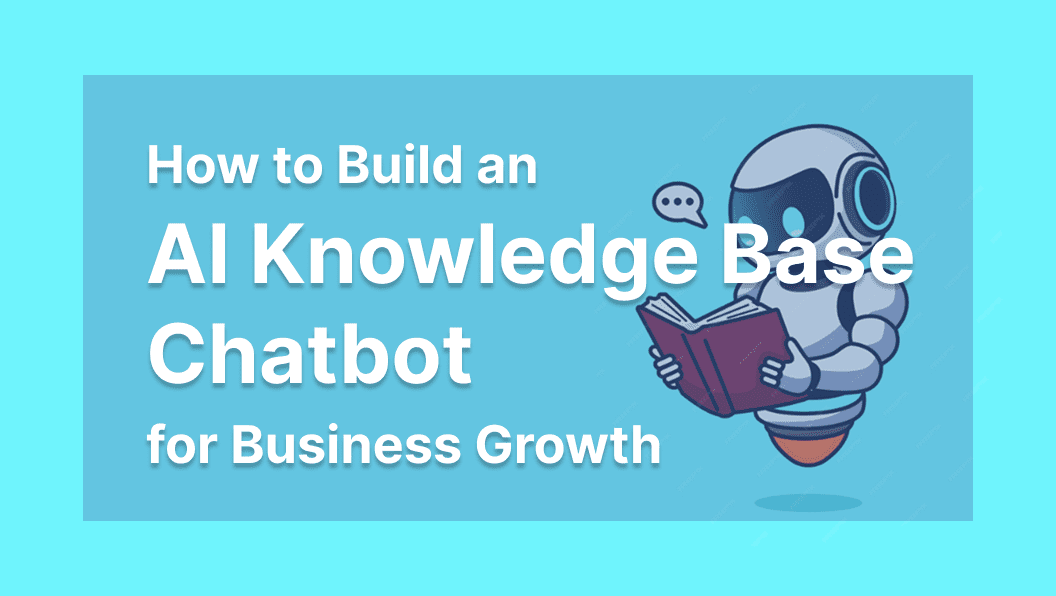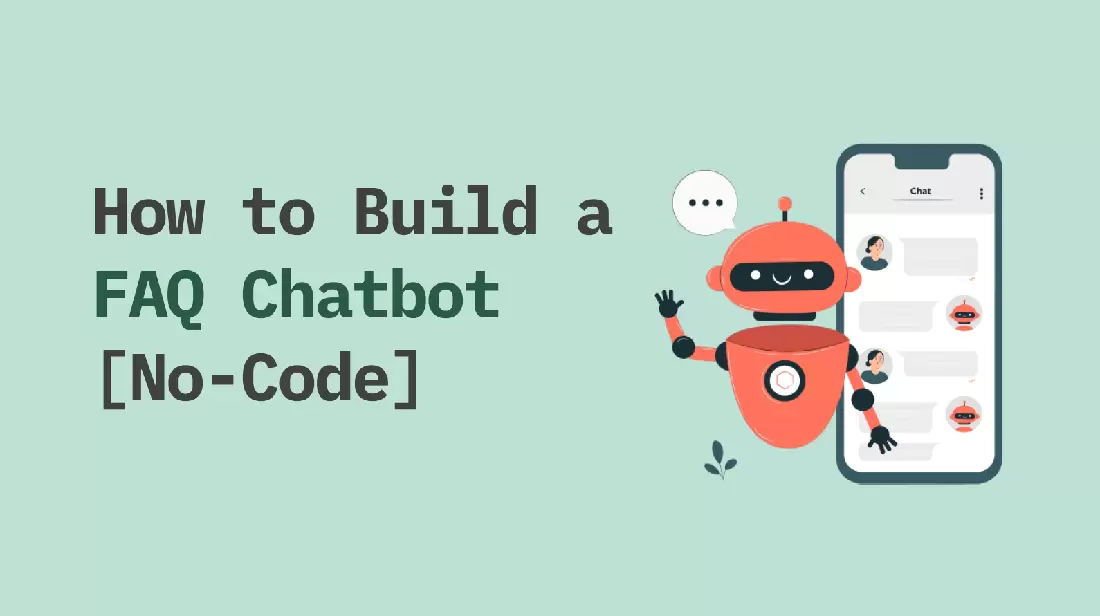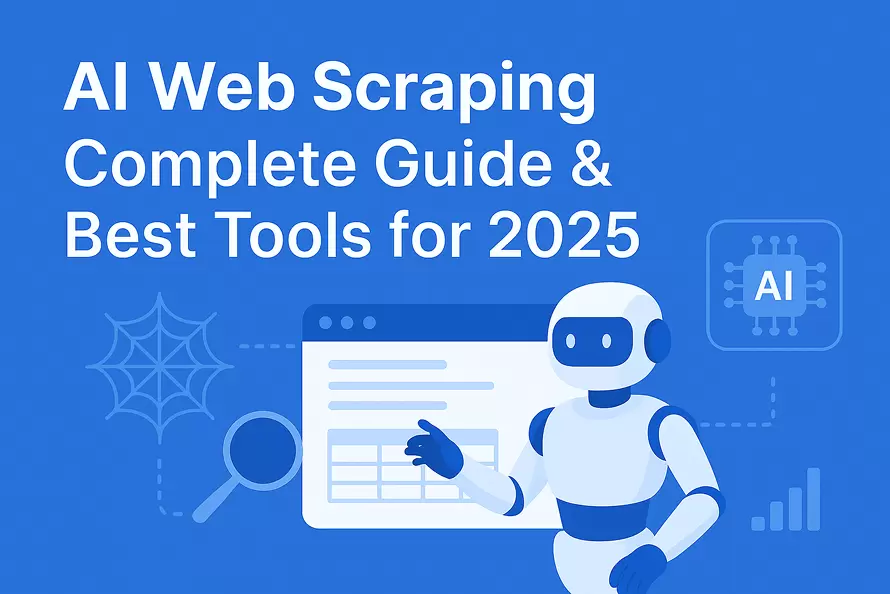Contextual AI is the type of artificial intelligence that understands the "why, where, and when" of data. It allows systems to understand and respond based on the context surrounding data inputs. This means AI systems access an enterprise's knowledge base, including documents, chat logs, user profiles, sensor data, and more, to ground their responses in a real-world context.
Think of a contextual AI chatbot that knows whether 'Jane' in a query is a repeat customer who just bought a product yesterday, rather than treating her as a generic persona. This context-driven approach leads to more accurate and relevant answers. One study found that giving a model "sufficient context" can boost correct-answer rates by 2–10%.
McKinsey research highlights that leaders are betting on AI for intelligent automation and hyper-personalization, but results require solid data foundations. Simply put, contextual AI goes beyond traditional AI's narrow scope by integrating enterprise data, which leads to smarter decision-making.
There are now many modern platforms built around this concept of an AI contextual evidence platform. GPTBots is one such contextual AI solution for enterprises that helps build intelligent AI agents trained on enterprise knowledge for customer support, lead generation, and more.
In this comprehensive guide, we will learn how contextual AI works, its key components, importance, and effective use cases.
How Does Contextual AI Actually Work?
Contextual AI needs full situation understanding before responding. It does that by connecting an AI model to live enterprise data and processing queries with that added knowledge. At a technical level, this solution often uses Retrieval-Augmented Generation (RAG), which enhances AI responses by adding relevant information from external sources.
Such a system converts every user query into a semantic vector. This vector is then compared against a vector database of indexed knowledge, which can be chunks of documents or records. The system retrieves the most relevant passages and appends them to the query before sending it to the language model to generate an answer. This way, the AI sees both the query and the retrieved context, so it can answer with evidence from your data.

If you look from a practical perspective, the AI contextual evidence platform includes several mechanisms for understanding and managing context:
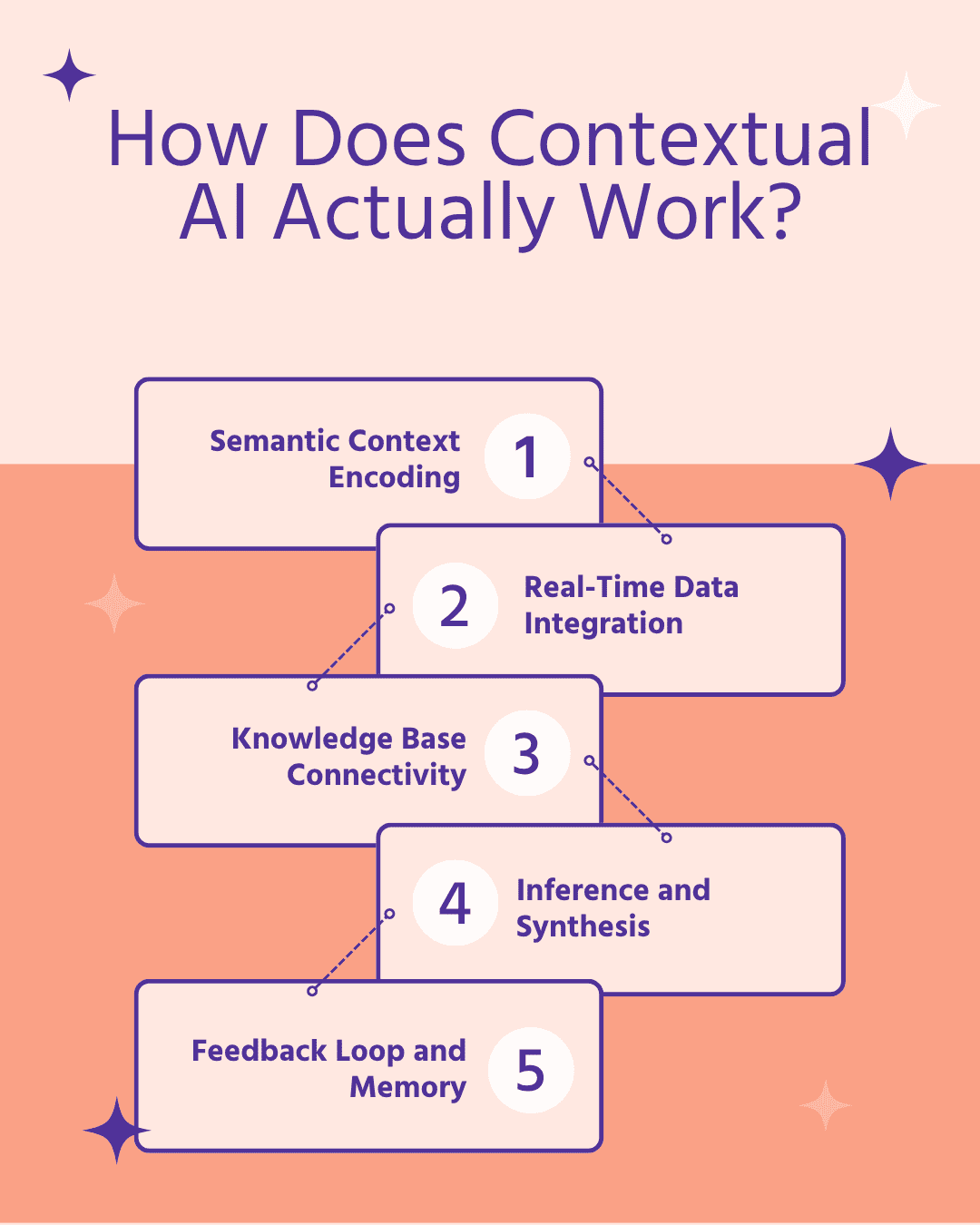
Semantic Context Encoding
The AI considers the user intent, history, and metadata to extract meaning from a query. For example, when a customer asks about "Jane's order", the AI knows Jane is a loyal buyer and detects urgency in her complaint.
Real-Time Data Integration
Contextual AI constantly pulls the latest data. A centralized data layer ensures the AI always works with up-to-date information. If new product specs are published or a policy is updated, a connected AI instantly incorporates that into answers. For example, for Jane's order status query, the AI instantly includes today's updated shipping delays.
Knowledge Base Connectivity
It merges multiple data sources, including legacy databases, document repositories, CRM systems, chat logs, etc. This way, a single query can draw on all relevant data from legacy systems, cloud apps, real-time feeds, and more. For example, it pulls Jane's profile, recent chats, and warehouse stock details to deliver a complete shipping update.
Inference and Synthesis
An LLM model synthesizes the retrieved context and generates answers. It may also compare multiple pieces of evidence from different documents to triangulate an answer. For example, before telling Jane her order status, the AI cross-references shipment tracking and recent customer service notes to ensure the reply is precise and up to date.
Feedback Loop and Memory
Over time, the AI learns from interactions and updates its context. It can track a conversation's history or user preferences to refine answers. It might also log new Q&A pairs back into the knowledge base. For example, after solving Jane's query, the AI remembers her preferences for quicker support next time.
To wrap up, contextual AI works on these main principles:
- Embedding queries
- Retrieving supporting information
- Generating answers
This augmented pipeline transforms a generic AI agent into a domain-specialized assistant that provides precise answers and performs human-like operations.
What Are the Key Components of an AI Contextual Evidence Platform?
Several core components build up a complete AI contextual evidence platform. They all work together to have the AI adapt to different situations and give personalized answers. These include:
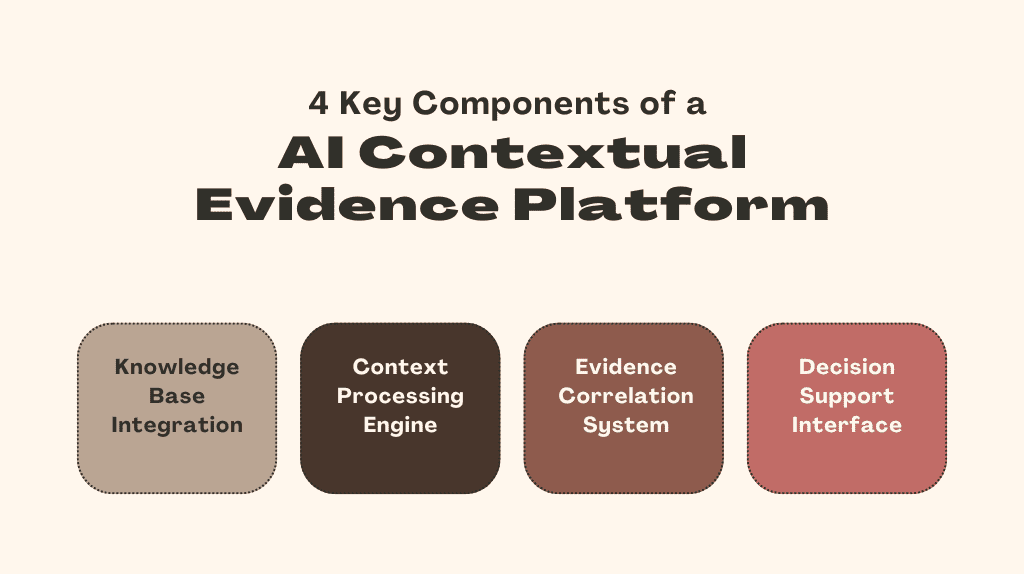
Knowledge Base Integration
What separates contextual AI from traditional AI is its ability to extract up-to-date information from an enterprise knowledge base instead of just relying on pre-trained data.
It builds the knowledge base by unifying a repository of enterprise data, including documents, manuals, databases, logs, emails, etc. There are two main aspects of knowledge base integration:
- Document Processing and Indexing: Documents are first processed and indexed. It involves extracting, categorizing, and indexing data from diverse formats, including PDFs, images, text, URLs, and more. The structured indexing enables fast semantic searches and efficient retrieval of relevant evidence pieces.
- Real-Time Knowledge Retrieval: After indexing, the AI accesses and pulls the most current information from the knowledge base. This way, the responses reflect the latest policies or updates.
To better understand this, consider GPTBots as the AI contextual evidence platform. Its knowledge base capabilities allow you to upload all the corporate data in the form of PDFs, spreadsheets, websites, online text, Q&A, and more. Afterward, it processes and indexes this data and makes it usable with the chatbots and other AI solutions you build with GPTBots.
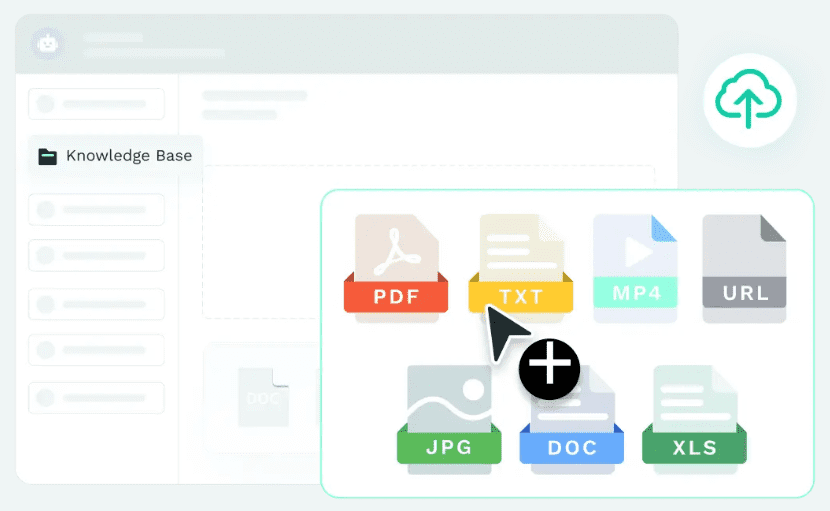
Context Processing Engine
This component handles understanding the query and assembling context. It uses National Language Processing (NLP) to identify key entities and intents, then applies retrieval logic. For example, it may break a complex question into sub-questions or use business rules to prioritize certain documents. The processing engine funnels the right amount of context to the LLM and avoids irrelevant noise.
Evidence Correlation System
After the AI generates an answer, this component links the response back to the source documents. It provides verifiable outputs by highlighting source sentences or data that support the answer. The system might attach footnotes or references to specific text passages, so users can audit where each statement came from.
Decision Support Interface
This component reflects the user-facing tools, such as dashboards, chat interfaces, or APIs. They provide answers to users along with their evidence. Users can also use them to refine queries or ask follow-up questions. For example, GPTBots' Enterprise Search feature lets companies build an accessible internal knowledge base for employees, which can provide accurate and instant answers enriched with documentation links and data visualizations.
Why Do Enterprises Need Contextual AI for Better Decision-Making?
The business world today demands speed, accuracy, and personalization. The AI has passed the early buzz of generic automation and now must deliver context-aware insights. That's why the importance of contextual AI is surging among enterprises.
Below are the key reasons that highlight why enterprises need contextual AI:
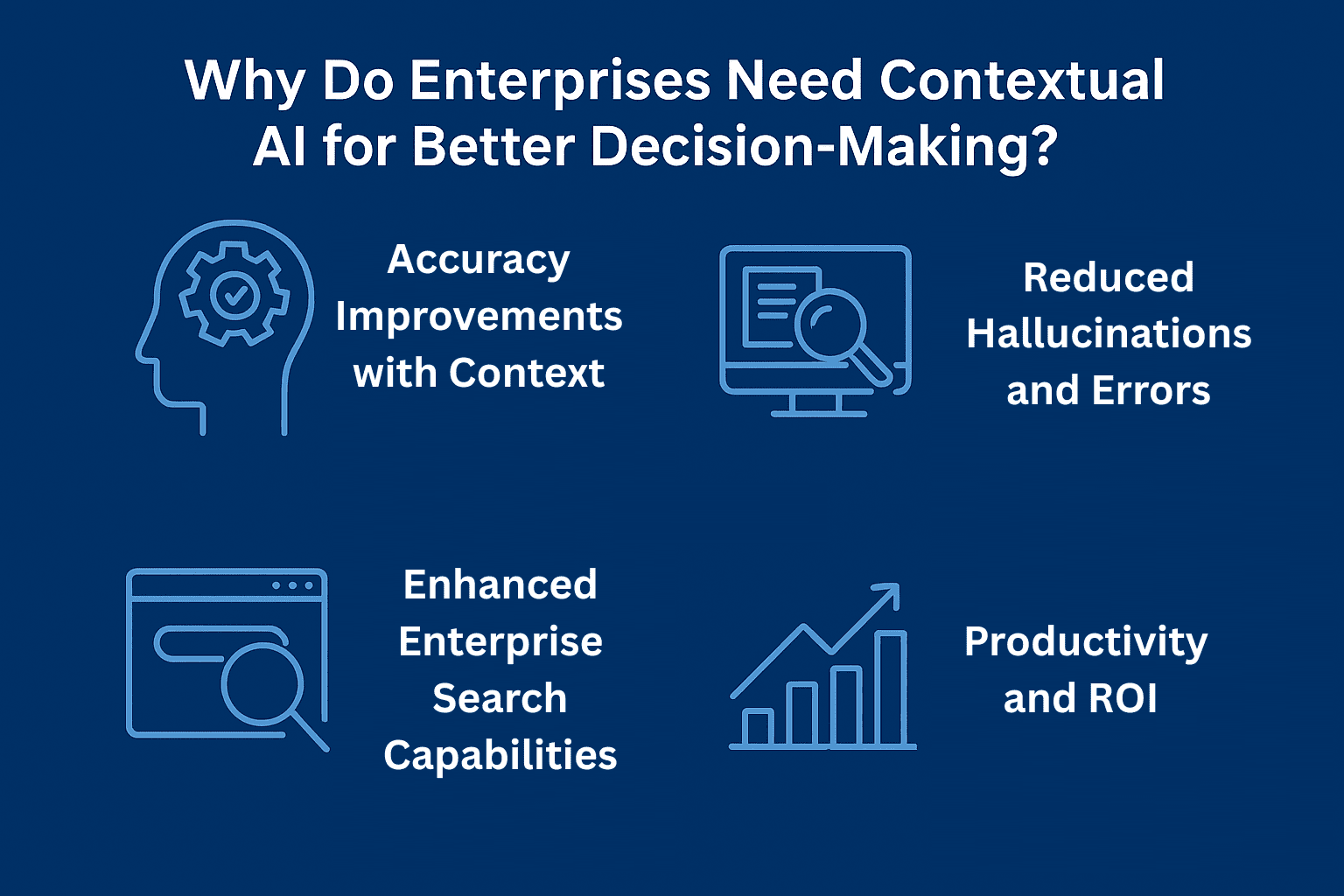
Accuracy Improvements with Context
Contextual AI improves the accuracy of insights due to its integration with a wide range of real-time and historical data. Rather than giving generic answers, it understands the nuance and interdependencies within enterprise data.
For example, assume that a user asks about the bank's fee schedule. Traditional AI provides a generic fee response based on old data. However, contextual AI pulls the latest fee schedule and considers the customer's history for a personalized answer.
Reduced Hallucinations and Errors
Traditional AI often creates answers that look true but have false information. However, contextual AI can check itself against the knowledge base. Some systems even implement a "selective generation" step, i.e., if the retrieved context is insufficient, the AI is prompted to admit uncertainty rather than guess. This means answers are supported by data, which reduces the risk of misinforming users.
Enhanced Enterprise Search Capabilities
Contextual AI transforms search. The keyword match approach is shifted to semantic search over all corporate information. So, a single query scans documents, chats, databases, and all other resources. This unified search yields more comprehensive answers. Users no longer need to hunt in multiple systems, as the AI fetches and synthesizes relevant info at once.
ROI Metrics and Case Studies
AI contextual evidence platforms provide quantifiable efficiency gains. Enterprises report that contextual AI automation can save substantial time.
In one internal study, users saved about 1.1 workdays per week on average through AI-powered consolidation of tasks, and cutting tool sprawl reduced costs by about 86%. Similarly, the Qualcomm engineering team found that contextual AI enabled "thousands of engineers" to work more efficiently across "tens of thousands of support cases". Simply put, contextual AI shortens project cycles and frees experts for higher-value work.
What Are the Most Effective Use Cases for Contextual AI in Business?
Contextual AI is usable everywhere where up-to-date knowledge is required. Some of its effective use cases are as follows:
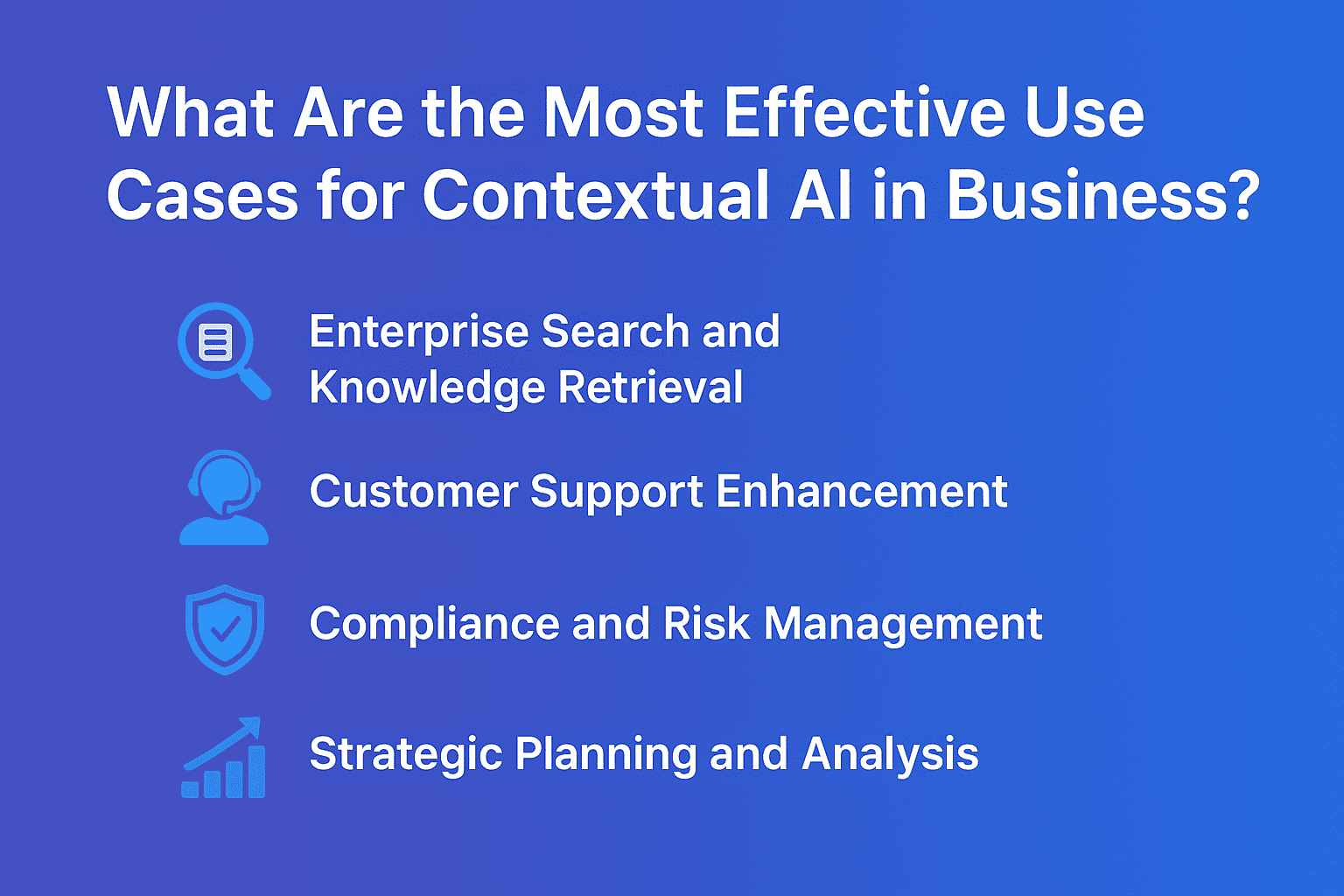
Enterprise Search and Knowledge Retrieval
Companies use contextual AI to power internal search engines. Employees can query company policies, project archives, product documentation, or others in natural language. For example, a user might ask, "What's our warranty policy on product X?", and the contextual AI will pull in the exact policy document passages to answer.
GPTBots is an AI contextual evidence platform whose Enterprise Search solutions let employees access enterprise knowledge instantly with AI search agents. This leads to a 120% increase in employee knowledge efficiency.
Customer Support Enhancement
Customer service bots become far more effective with context. Imagine it yourself. Customers don't have to repeat information, as the intelligent AI agent automatically incorporates their history.
For example, a support AI connected to your CRM knows that Mike recently returned an order and sees her open ticket. It can instantly answer "What's the status of my return?" with the correct details.
Studies show that context-aware agents reduce resolution time and improve satisfaction. In fact, bots can even generate more helpful and personalized support because they "see the latest tickets and purchase history along with personal details" all at once.
Compliance and Risk Management
Contextual AI helps adhere to rules in regulated industries. An AI contextual evidence platform can automatically check a proposed action against the latest compliance documents.
For example, a finance team might draft a contract clause, then the AI cross-references it with legal guidelines from a knowledge base to flag potential issues. Similarly, risk managers use context-aware analytics to monitor operations against regulations. All this makes it easier to spot violations before they occur.
Strategic Planning and Analysis
Contextual AI accesses real-time KPIs, reports, market research, and other useful insights that executives use to extract insights. For example, a VP could ask, "What were the quarterly sales trends for each region, and what products underperformed?"
The AI would compile sales data and internal memos to provide a summary. So, this linking of current data with institutional memory helps leadership make better choices quickly.
Which Contextual AI Platform Should You Choose for Your Enterprise?
Contextually smart AI is the need of enterprises to use the vast and complex data for an actionable purpose. But the question is which contextual AI platform is best to consider.
Evaluation Framework & Key Features Comparison
When you are looking to choose the right AI contextual evidence platform, you have to assess its ability to integrate with diverse enterprise data sources and handle vast unstructured information.
The key evaluation points include:
- Real-time data retrieval
- Semantic understanding
- Knowledge base integration
- Scalability
- Retrieval-Augmented Generation (RAG) capabilities
- Multi-model compatibility
- Source citation & evidence linking
- Security and compliance
- Implementation support, user experience, and accessibility
- Monitoring and analytics
Based on these factors, you should shortlist the top platforms and then compare their features to shortlist the best ones. Afterward, you can try their free trials or request demos and make your final pick.
GPTBots: An Enterprise-Ready Contextual AI Platform
Instead of struggling with trying different platforms, GPTBots stands as a leading solution for contextual AI. As an enterprise-grade AI platform, it helps transform organizational knowledge into intelligent AI agents/bots.
GPTBots combines a powerful knowledge base management system with advanced retrieval-augmented generation (RAG) technology to ensure every AI response is grounded in factual and real-time data.

Key advantages of GPTBots include:
- Unified Knowledge Base: GPTBots allows smooth ingestion of data from multiple sources, including cloud drives, CRMs, internal documentation, and more. This helps create a centralized and searchable knowledge repository.
- Powerful and Diverse Bots: It helps build AI agents for customer support, internal enterprise search, lead generation, content creation, data insights, and more.
- Context-Aware Intelligence: Its proprietary context-processing engine ensures that the AI understands user intent and domain relevance for more precise results.
- Scalable & Flexible Architecture: It can scale from small teams to large enterprise deployments and maintain consistent performance.
- Integration: Its open APIs and pre-built connectors make it easy to integrate with existing workflows and internal systems.
Other than the above advantages, GPTBots is also exceptional in user experience. Its no-code platform lets even non-technical users build a knowledge base and create AI agents. On top of that, its expert support lets companies get the services of an expert to help build full-fledged bots for their internal or external operations.
Conclusion
Enterprises are rapidly switching from traditional AI buzz to crucial contextual AI to fulfill the demand for accurate responses. Contextual AI's ability to integrate real-time data and unify disparate information sources makes it crucial for modern decision-making. Businesses adopting contextual AI see measurable gains in accuracy and operational efficiency.
The key action steps your organization should adopt include:
- Identify key business challenges and prioritize AI use cases.
- Integrate and unify enterprise data to build a single source of truth.
- Select an AI contextual evidence platform, like GPTBots, that meets scalability and security needs.
- Start with small pilots to test, measure, and refine AI models.
- Train employees and manage change to increase adoption and trust.
- Partner with vendors for smooth implementation and ongoing support.
- Continuously monitor performance and expand AI applications as needed.
These concise steps will help your organization adopt contextual AI and drive better decisions and business outcomes.
To start, GPTBots serves as your all-in-one platform for contextual AI needs. You can get started right away or get personalized expert consultation from GPTBots on how to integrate AI context into your existing workflows.
Get a Custom DemoBook a demo now to watch GPTBots in action or start its free trial today.



